Geology and prospectivity of the Capel and Faust basins in the deepwater Tasman Sea region*
T. Hashimoto A , K. Higgins A , N. Rollet A , V. Stagpoole B , P. Petkovic A , J. Colwell C , R. Hackney A , G. Logan A , R. Funnell B and G. Bernardel AA Geoscience Australia.
B GNS Science.
C Retired.
The APPEA Journal 51(2) 702-702 https://doi.org/10.1071/AJ10082
Published: 2011
Abstract
Geoscience Australia recently completed a petroleum prospectivity assessment of the Capel and Faust basins as part of the Australian government’s energy security program. This pre-competitive study was carried out in collaboration with GNS Science and the government of New Caledonian, and was based on seismic, potential field, multibeam bathymetry and sample data acquired during marine surveys in 2006–7.
The Capel and Faust basins are located in the Tasman Sea region, which contains a number of deepwater basins. There is little information about their geology. The Geoscience Australia study confirmed the existence of large compartmentalised depocentres containing sediments up to 6 km thick. The basins formed during two Cretaceous extensional episodes related to the final breakup of eastern Gondwana. Syn-rift deposition appears to have been initially dominated by volcanics and volcaniclastics, then dominated by non-marine to shallow marine clastics. The post-rift succession comprises upward-fining clastic to calcareous bathyal sediments. A pre-rift (?Mesozoic) sedimentary succession appears to underlie some depocentres.
Mesozoic successions in nearby eastern Australian and New Zealand basins suggest that fluvio-deltaic potential source rocks (Triassic/Jurassic to Upper Cretaceous coals) may occur in the pre-rift and syn-rift successions of the Capel and Faust basins. Multi-1D basin modelling suggests that the deeper depocentres are presently within the oil or gas generation window and that expulsion occurred from the Early Cretaceous. Fluvio-deltaic, shoreline and turbiditic sandstones may provide potential reservoirs. Likely play types include large anticlines, fault blocks, unconformities and stratigraphic pinchouts. The results will guide future exploration and reduce risk in this vast frontier region.
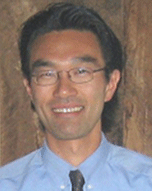
Riko Hashimoto is a basin analyst at Geoscience Australia’s Petroleum and Marine Division. He leads a project that is assessing the geology and prospectivity of the deepwater Capel and Faust basins, eastern Australia, as part of the Australian Government’s Energy Security Program. He has a background in stratigraphy, sedimentology and geomorphology, and holds a BSc (Hons) and a PhD from Sydney University. He has experiences in the Palaeozoic and Mesozoic onshore basins and the Quaternary depositional systems of southeast Australia through previous work at the NSW Department of Primary Industries and in consultancies. Committee member: PESA (ACT branch). |
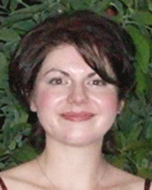
Karen Higgins is a geologist in the Remote Eastern Frontiers and Southwest Frontiers projects (Petroleum Prospectivity and Promotions Group) at Geoscience Australia. She received a BSc (Hons) (geology) from ANU in 2002. Member: PESA. |
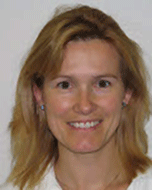
Nadege Rollet is a research scientist at Geoscience Australia. She obtained an MSc and PhD (geology and geophysics) from the University of Paris–Pierre et Marie Curie, France, in 1995 and 1999, respectively. Her studies are focused on geodynamic reconstructions and structural framework of the south and southeast Australian margins, on detection and characterisation of natural hydrocarbon seepage on the north and northwest Australian margin. She is working in the Remote Eastern Frontiers and Southwest Frontiers projects in the Petroleum and Marine Division at Geoscience Australia. |

Vaughan Stagpoole is the oceans exploration section manager at GNS Science, Wellington. He is a geophysicist who specialises in research on the formation and development of sedimentary basins and basin modelling. Recently, he has been heavily involved in the assessment of the prospectivity of New Zealand’s frontier sedimentary basins and the New Zealand Law of the Sea project. Vaughan has a PhD from Victoria University, Wellington. |
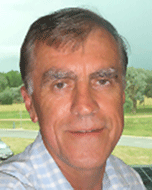
Peter Petkovic graduated with a BSc (geology, physics and mathematics) from ANU in 1971. He is now a geophysicist with the Petroleum and Marine Division of Geoscience Australia, where he is involved in processing, modelling and interpretation of bathymetry, potential field and refraction seismic data in frontier areas for crustal-scale problems, and software development. Member: ASEG. |
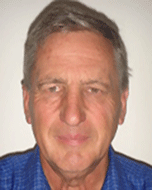
Jim Colwell is a former employee of Geoscience Australia. Throughout a career of more than 30 years, Jim has worked extensively on many parts of the Australian continental margin as well as publishing in the fields of marine geology and sedimentology. He is a graduate of ANU and Flinders University. |

Ron Hackney graduated from ANU with a BSc (Hons) in 1993. He completed an MSc at the Victoria University of Wellington in 1995 and a PhD at UWA in 2001. This was followed by a postdoctoral at the Free University of Berlin and a Junior Professorship at the University of Kiel. Ron returned to Australia in 2008 to join the Marine and Petroleum Division of Geoscience Australia as a potential-field geophysicist. In addition to his work on Tasman Sea basins and the southwest Australian continental margin, Ron has worked on subduction-zone processes, rift-flank uplift in Antarctica and crustal structure in WA. |
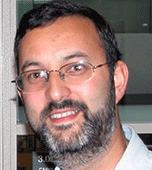
Graham Logan obtained a BSc (Hons) (geology) in 1988 from the University of Glasgow and a PhD in organic geochemistry from the University of Bristol (1992). He worked at Indiana University and CSIRO Petroleum before joining Geoscience Australia in 1997. He is project leader of the geological and geophysical data repositories, and former project leader of the Remote Eastern Frontiers project in the Petroleum and Marine Division of GA. Graham has published more than 50 papers and is associate editor for Geochimica et Cosmochimica Acta. Member: Geochemical Society. |

Rob Funnell is a geophysicist specialising in thermal modelling of sedimentary basins, the development of basin models to quantify petroleum prospectivity and risk, and storage aspects of carbon dioxide sequestration. Rob is the basin modelling team leader, and leads the GNS science research in basin modelling including the development of new modelling software. He is the 4D Taranaki objective leader in the New Zealand petroleum resources program and has led more than 50 consultancy projects on basin modelling and petroleum prospectivity. Rob also leads the carbon capture and storage (CCS) research program and is CO2CRC manager at GNS Science. |
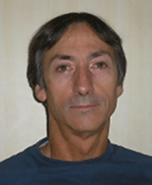
George Bernardel obtained a BSc (Hons) in geophysics from Sydney University (1986), as well as a BEng (computer systems) from USQ (2004). He is a geoscientist at GA with 15 years’ experience in seismic acquisition and processing, seismic interpretation and Law of the Sea technical analyses. George has recently been involved in geological studies of the northern Lord Howe Rise and seismic data acquisition along the west Australian margin. |
References
Bryan, S.E., Constantine, A.E., Stephens, C.J., Ewart, A., Schon, R.W., and Parianos, J. (1997). Early Cretaceous volcano-sedimentary successions along the eastern Australian continental margin: implications for the breakup of eastern Gondwana. Earth and Planetary Science Letters 153, 85–102.Mortimer, N., Hauff, F., and Calvert, T. (2008). Continuation of the New England Orogen, Australia, beneath the Queensland Plateau and Lord Howe Rise. Australian Journal of Earth Sciences 55, 195–209.
Norvick, M.S., Langford, R.P., Rollet, N., Hashimoto, T., Higgins, K.L., and Morse, M.P., 2008—New insights into the evolution of the Lord Howe Rise (Capel and Faust basins), offshore eastern Australia, from terrane and geophysical data analysis. In: Blevin, J.E., Bradshaw, B.E., and Uruski, C. (eds) Eastern Australasian Basins Symposium III: Energy security for the 21st century. PESA Special Publication, 291–310.
Rey, P.F., and Müller, R.D. (2010). Fragmentation of active continental plate margins owing to the buoyancy of the mantle wedge. Nature Geoscience NGEO825 , .
| Fragmentation of active continental plate margins owing to the buoyancy of the mantle wedge.Crossref | GoogleScholarGoogle Scholar |
van de Beuque, S., Stagg, H.M.J., Sayers, J., Willcox, J.B., and Symonds, P.A., 2003—Geological framework of the northern Lord Howe Rise and adjacent areas. Geoscience Australia Record, 2003/01. Canberra: Department of Industry, Tourism and Resources, Geoscience Australia.


